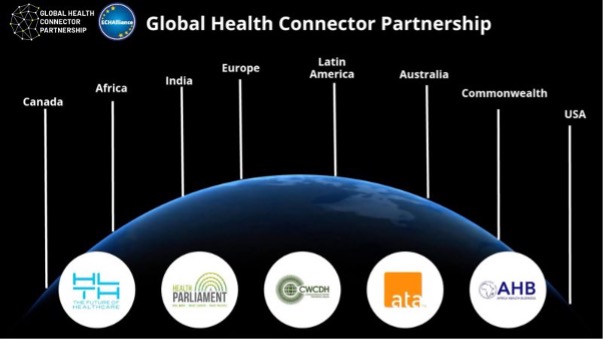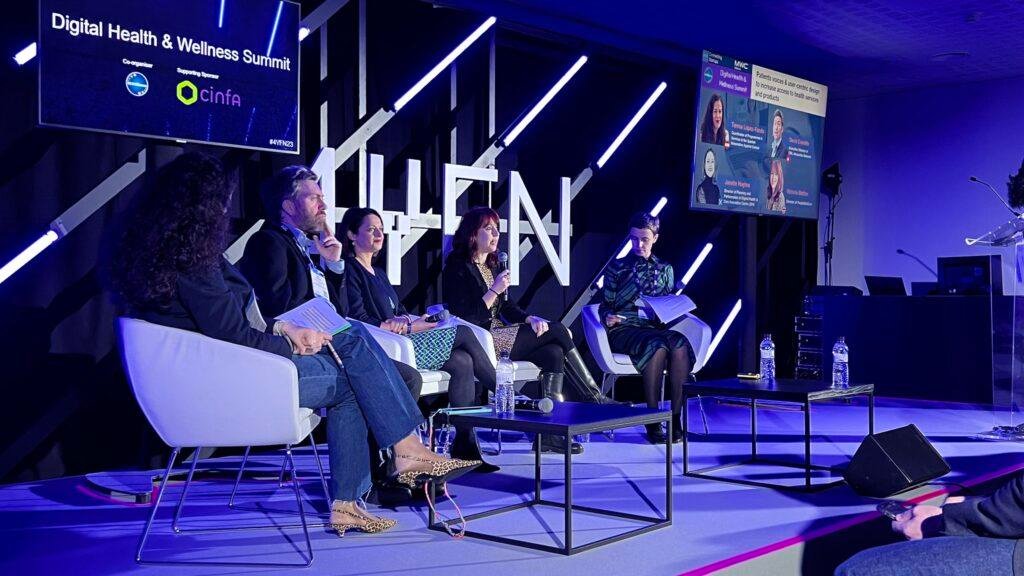BY BRIAN O’CONNOR, CHAIR OF ECHALLIANCE & MARIE-CLAIRE WANGARI, PROJECT MANAGER, AFRICA HEALTH BUSINESS
The digital health landscape in Africa is growing at an exponential rate, with Sub-Saharan Africa being an implementation hub of digital health innovations as a tool towards health systems strengthening on the continent.
The COVID-19 pandemic proved a pivotal time for the scale-up of digital health innovations, with the overloading of the already feeble health systems which showed cracks in the service delivery of essential health services. This paved the way for increased solutions in telemedicine, tele pharmacy and tele diagnostics. The movement was spearheaded by the fact that close to 40 percent of all SIM card connections are based in Africa as of 2018, a number that is expected to increase to 66 percent by 20225. and this number is increase to 66 percent by 2025. [1]
The growing efforts to enhance the digital health space can complement the tackling of challenges in advancing men’s health on the African continent. For example, the underutilization of preventative health services and the procrastination in seeking treatment for health issues due to the societal masculine norms by men [2]
Partnerships and collaborations in the digital health space can enhance the uptake of digital health solutions that positively impact health outcomes in Africa. Examples are the ongoing efforts by the Global Health Connector Partnership (GHCP), implemented by the ECHAlliance. The GHCP connects global health communities targeting health inequalities, skills, and data. It consists of organisations determined to improve the health and care of citizens worldwide through the appropriate use of digital technologies in the provision of health and care services under the four themes of data and digital services, digital skills workforce, disparities globally and green health.

Figure 1: Organizations under the Global Health Connector Partnership
A collaborative model is essential in bridging the gap in men’s health, especially regarding health-seeking behaviour. Whilst it may be difficult to solve the societal issues posed by masculinity, namely, the fear of men appearing weak and hence minimizing or inaccurately reporting symptoms, or the mental health stigma men face when trying to communicate their emotions, digital health can be used to bridge the health seeking gap through the social-ecological model of health promotion

Figure 2: The Social Ecological Model (SEM) of Health [3]
| GHCP Thematic Area | SEM Model of Men’s Health |
| Disparities Globally | Patient – Healthcare provider level: This can be through remote patient monitoring i.e., vital monitoring, routine check-ups and clinic follow-up through managing one’s health data through platforms such as AfyaRekod to health promotion and disease prevention through podcasts such as the Africa NCD Champions by Stowelink Inc to even managing ones health financing e.g., through the M-TIBA platform. |
| Data and Digital Services to Support the Recovery of Healthcare Systems Globally | Community & Society level: Constructive use of social media can amplify health information and health advocacy efforts towards pushing men to prioritize their health. In addition, data transparency efforts e.g., through the Gravitate Health G-lens can facilitate the use of digital health records that are securely managed and can allow one be actively engaged in the management of their health and hence bridge the gap in the doctor being the only gatekeeper to one’s health records . |
| Green Health | Interpersonal relationship level: Digital health platforms can provide an avenue for men to form community groups to not only discuss issues affecting them based on the health information they get online, but also be a means of curbing health issues such as non-communicable diseases through support groups so as to live a healthy better life. |
| Digital Skills Workforce: Recruitment, Retention, Resilience | Individual level: Using solutions such as wearables and various telemedicine platforms such as Ponea Health, Zuri Health or BYON8 can complement men’s general inclination towards the use of technology. Such platforms can be used as a source of patient education in addition to reducing the stigma towards going to hospitals by taking away the anxiety-induced stresses of going to the hospital, by facilitating one to pick an appointment at a time and date of their choosing, reducing waiting times and making it easier with patient follow up [4] |
To achieve all this, one must acknowledge the enablers and barriers to digital health interventions and its role in patient-centred health systems of men’s health

Figure 3: Enablers and barriers for digital health solutions and interventions, their target populations and effect on health outcomes [1]
In order, to bridge the gaps, there is a need for collaboration between the public and the private sector to ensure that solutions are not only private sector incubated with no public sector understanding or ownership. This process has already been set in motion thanks to initiatives such as the Chanjo portal which is a part of the National Vaccines Immunization Program in Kenya and digital health solutions that are available in the African region.
The increase in uptake of digital health innovations prove that it is only a matter of time till digital health is completely embraced on the continent. However, to expedite its adoption, there is a need for collaboration to avoid reinventing the wheel and duplicating efforts; the GHCP model provides an avenue for such.
About ECHAlliance
The European Connected Health Alliance Group (ECHAlliance Group) is the Global Health Connector for Digital Health, facilitating multi-stakeholder connections around ecosystems, driving sustainable change and disruption in the delivery of health and social care.
Learn more about ECH Alliance here: https://echalliance.com
About AHB
Africa Health Business (AHB) is a Pan-African advisory and consulting firm aiming to increase equitable access to healthcare in Africa. With a focus on the African continent and via private sector engagement, we offer market access and implementation support, serve as a health ecosystem enabler, and provide stakeholder engagement services.
Learn more about AHB here: https://ahb.co.ke
About AHBS – Africa Men’s Health
AHB will be hosting the seventh Africa Health Business Symposium (AHBS VII): Africa Men’s Health under the theme “The role of the private sector in advancing men’s health in Africa.” We are proud to partner with ECH Alliance and GHCP as we discuss the key role digital health has in advancing men’s health in the region.
Learn more at: www.africahealthbusiness.com
Reference
[1] Sub-Saharan Africa—the new breeding ground for global digital health – The Lancet Digital Health
[3] Chapter 1: Models and Frameworks | Principles of Community Engagement | ATSDR (cdc.gov)
[4] Numankind | Why digital healthcare is transforming men’s health
